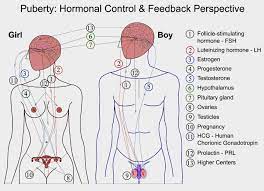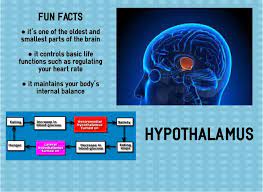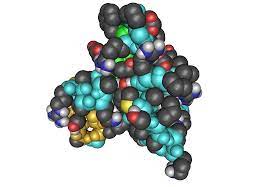How Does The Human Body Produce Human Growth Hormone?
Hormone Replacement Therapy
HGH Deficiency with Age
How does Human Growth Hormone Work?
HGH is the primary hormone responsible for human growth, but how does it physically function within the body? In this article, we will explain the endocrine processes that spur the secretion of Growth Hormone and the effects of HGH after its release.
What Are Hormones?
Hormones are very similar to neurotransmitters in purpose, although they function quite differently. Neurotransmitters send information and messages via electrical current from neuron to neuron to deliver them throughout the body. Hormones send messages or produce change via the bloodstream,  circulating throughout the body to target tissues and organs to produce an effect.
circulating throughout the body to target tissues and organs to produce an effect.
When a target molecule contacts a related hormone, it produces a particular and unique response. There is also a third category of messengers known as chemical messengers, which produce change via the circulation of inorganic chemicals within the body. The most common of these is Nitric Oxide, which is innately crucial to male sexual performance.
GH-RH Stimulates Growth Hormone Release
HGH is stimulated by a hormone known as Growth Hormone-Releasing Hormone. This hormone is an extended-chain polypeptide. There are a few variations of GH-RH, but they all produce the same physiological effect on the body; they vary in length between thirty-seven and forty-four peptides.
There is also a medical form of GH-RH known as Sermorelin, which is functionally identical to GH-RH but only contains a chain of twenty-nine amino acids. Most hormones released by the brain affect multiple areas of the organ, but GH-RH only acts upon the pituitary gland.
GH-RH is released by the Hypothalamus, which is often referred to as the brain's control center. The particular region of the Hypothalamus from which GH-RH is secreted is known as the Arcuate Nucleus. The Hypothalamus controls the release of numerous different hormones throughout the body in response to various signals sent from the body to the brain.
HGH Released during Exercise and Sleep
The body secretes GH-RH during periods of intense physical activity, as well as during sleep. Moderate emotional stress can also increase GH-RH release, but long-term, sustained stress contributes to GH-RH Decline. GH-RH flows from the Hypothalamus to the Pituitary via a pathway known as the Hypophyseal Portal System.
Early in life and during puberty, Human Growth Hormone stimulates physiological growth throughout the body, most notably in the skeletal system. The change in height that occurs during puberty is almost wholly the result of high levels of HGH that flow through the body during this period.
More about the Hypothalamus
The hypothalamus has a number of different and essential purposes as the regulation center of the brain. This organ is located just underneath the brain's center, attached to the thalamus from below. The hypothalamus is responsible for a number of different vital functions, including metabolism and temperature regulation.
In addition, the hypothalamus is directly in control of the proper function of the testes and ovaries and the adrenal gland, meaning that the organ controls  both aggression and sex.
both aggression and sex.
The Hypothalamus is also the central mediator of the endocrine system, releasing precursor hormones that spur the function of various organs throughout the body, including the pituitary gland.
HGH, the Pituitary, and Negative Feedback
Human Growth Hormone is released as a result of the direct stimulation of Growth-Hormone Releasing Hormone upon the Anterior Pituitary Gland. HGH Production is limited via a few particular Negative-Feedback Mechanisms.
One hormone known as Somatostatin is the primary hormone that slows down the production of Growth Hormone. Organs produce somatostatin throughout the body, including the stomach, pancreas, intestines, and hypothalamus.
The hypothalamus releases Somatostatin via the Periventricular Nucleus.
When the body receives signals to limit HGH Production, Somatostatin flows throughout the body to the brain, which attaches to receptors within the anterior pituitary known as Somatotrophs.
The Somatotrophs are tiny organs attached to the anterior pituitary whose only job is to secrete and release Human Growth Hormone. Because of this, HGH is often referred to by the scientific term, Somatotrophin because it stimulates the function of the Somatotrophs.
HGH Release Limited by Growth Factors
HGH Production is also limited by the presence of Insulin-like Growth Factors directly produced by the liver due to Growth Hormone Production. When the brain senses these Growth Factors, it sends a message to the body that there is a sufficient level of Growth Hormone Released into the body.
HGH and Ghrelin
Another hormone that stimulates the release of Growth Hormone-Releasing Hormone is known as Ghrelin. Ghrelin primarily plays a role in digestion, conveying to the brain that the stomach is full. Since Human Growth Hormone is a metabolite, Ghrelin Release is directly correlated with HGH Production.
It is also theorized that Ghrelin increases the release of GH-RH while limiting the release of Somatostatin. Although scientists are well-versed in the effects of Ghrelin on hunger, they are less specific regarding the direct manner by which Ghrelin affects GH-RH and Growth Hormone Release.
How is Human Growth Hormone Released?
The pituitary gland secretes HGH in short and brief intervals known as pulses. These pulses occur both day and night, but the pituitary is most active while we are asleep. The highest volume of Growth Hormone Secretion occurs in the initial deep phase of sleep, which happens about one hour into the sleep cycle.
The second highest volume of Human Growth Hormone is released during vigorous physical activity to spur the metabolism and increase the amount of energy available to the muscles. From this point on, both Endogenous Growth Hormone and Injected Bio-Identical Somatropin function similarly.
Once HGH hits the bloodstream, it is no longer influenced by the brain, outside of reverse feedback mechanisms and sensitivities that may arise at the level of target organs.
HGH and the Liver
Although Human Growth Hormone can stimulate many different target tissues directly, most HGH circulates through the liver, where it is processed into hormones known as Insulin-Like Growth Factors, the most common of which, by far, is IGF-1.
Human Growth Hormone slows down the rate at which the liver absorbs glucose while also encouraging a process known as gluconeogenesis.
Gluconeogenesis is an internal chemical process that converts proteins into fuel for the body. This is one reason why HGH benefits weight loss and muscle development. By converting protein into energy, the body burns many more calories than it would during normal physiological processes.
Role of IGF-1 and HGH in the Human Body
IGF-1 and Human Growth Hormone stimulate target tissues all over the human body. Every one of the significant organs of the body has receptors for these hormones, even the brain. The bodily tissues with the highest number of IGF-1 and HGH receptors are the muscles, cartilage, and bones, explaining why these organs are the most sensitive to Human Growth Hormone and HGH Deficiency.
In the bones, IGF-1 stimulates the function of osteoblasts, organs within the bones that are responsible for the recycling and reconstruction of new bone  tissue, which prevents osteoporosis. In the soft cartilage of the bones, IGF-1 is utilized by organs known as chondrocytes to stimulate the development of new and healthy cartilage tissue.
tissue, which prevents osteoporosis. In the soft cartilage of the bones, IGF-1 is utilized by organs known as chondrocytes to stimulate the development of new and healthy cartilage tissue.
Human Growth Hormone also can stimulate muscle tissue development because it increases the amount of energy available to the muscles to respond to exercise while also increasing the efficiency of the body's ability to cultivate muscle growth during sleep.
Human Growth Hormone and IGF-1 also encourage the metabolism and breakdown of adipose fat deposits across the body, increasing the rate at which the body burns fat while also providing increased energy and reducing fatigue.
How is Human Growth Hormone Metabolized?
HGH is processed primarily by the kidneys and the liver. The liver can metabolize 3-4 IU of Human Growth Hormone every 5-7 hours. Because of this, most Hormone Specialists suggest that Somatropin Users inject their medication in a pattern that replicates the body's typical pattern of hormone release.
Purposefully injecting an overdose of Human Growth Hormone significantly increases the risk of unwanted side effects. These side effects will likely outweigh the minor increase in benefit that the patient experiences. Whatever HGH the body does not use is broken down directly into component amino acids released through urination.
Human Growth Hormone only stays in the system for a brief period of time, no more than three to four hours. IGF-1, on the other hand, is detectable in the blood for a slightly more extended period of time, but no longer than a few days.
Because of how quickly the hormones cycle through the body, it is challenging to detect Human Growth Hormone or IGF-1 use unless drug tests are taken very soon after an injection is administered, making it a very tempting choice for athletes subject to drug testing.
HGH for Growth Hormone Deficiency
HGH Hormone Replacement is also highly sought after because of its ability to alleviate the effects of Age-Related Human Growth Hormone Deficiency. HGH Production naturally declines with age, beginning in the late twenties and early thirties. As the decline continues, it can increase the risk of numerous health complications throughout the body.
Many men and women worldwide choose Hormone Replacement with Bio-Identical Somatropin to alleviate the symptoms of the aging process, which result from moderate-to-enhanced Growth Hormone Deficiency.
- 0001 Serostim Bio-identical Hgh Injections [Last Updated On: August 14th, 2025] [Originally Added On: July 31st, 2020]
- 0002 Smart And Simple Tips To Boosting Your Hgh Production [Last Updated On: August 9th, 2025] [Originally Added On: August 1st, 2020]
- 0003 Ten Tips For Naturally Enhancing Human Growth Hormone Production [Last Updated On: June 12th, 2025] [Originally Added On: August 4th, 2020]
- 0004 How To Safely Inject (HGH) Human Growth Hormone [Last Updated On: April 2nd, 2025] [Originally Added On: August 5th, 2020]
- 0005 Can Hgh Injections Help You Manage Your Weight More Effectively? [Last Updated On: June 11th, 2025] [Originally Added On: August 6th, 2020]
- 0006 Do Not Buy Hgh Sprays As Scams [Last Updated On: June 10th, 2025] [Originally Added On: August 8th, 2020]
- 0007 Can Human Growth Hormone Really Slow Down Aging? [Last Updated On: June 9th, 2025] [Originally Added On: August 9th, 2020]
- 0008 The Potential Side Effects Of Human Growth Hormone (HGH) [Last Updated On: February 16th, 2025] [Originally Added On: August 10th, 2020]
- 0009 Beware Hgh Scams: Only Use Bio-identical Growth Hormone [Last Updated On: April 22nd, 2025] [Originally Added On: August 13th, 2020]
- 0010 Human Growth Hormone Replacement Therapy For Hgh Deficiency [Last Updated On: September 11th, 2025] [Originally Added On: August 14th, 2020]
- 0011 Do Not Buy Hgh Pills As Scams [Last Updated On: May 14th, 2025] [Originally Added On: August 18th, 2020]
- 0012 Hgh Injections From Mexico Are Dangerous And Illegal [Last Updated On: February 14th, 2025] [Originally Added On: August 19th, 2020]
- 0013 Human Growth Hormone Menopause Treatment [Last Updated On: February 20th, 2025] [Originally Added On: August 20th, 2020]
- 0014 Hormone Replacement Therapy Protects The Minds Of Hgh Deficient Patients [Last Updated On: May 12th, 2025] [Originally Added On: August 21st, 2020]
- 0015 Hgh Illegal Or Legal [Last Updated On: May 17th, 2025] [Originally Added On: August 22nd, 2020]
- 0016 How To Inject Hgh And Testosterone Safely And Easily [Last Updated On: May 13th, 2025] [Originally Added On: August 23rd, 2020]
- 0017 Human Growth Hormone Medical Research [Last Updated On: February 17th, 2025] [Originally Added On: August 24th, 2020]
- 0018 The Healing Properties Of Human Growth Hormone [Last Updated On: May 11th, 2025] [Originally Added On: August 25th, 2020]
- 0019 Hgh Therapy For Woman [Last Updated On: February 12th, 2025] [Originally Added On: August 26th, 2020]
- 0020 Hgh Therapy For Men [Last Updated On: April 19th, 2025] [Originally Added On: August 27th, 2020]
- 0021 How Does Age-related Hgh Decline Impact Health? [Last Updated On: February 17th, 2025] [Originally Added On: August 29th, 2020]
- 0022 Human Growth Hormone Injections Can Improve Joint Recovery After Injury [Last Updated On: May 10th, 2025] [Originally Added On: August 30th, 2020]
- 0023 The Anabolic And Bodybuilding Effects Of Bio-identical Hgh Injections [Last Updated On: May 9th, 2025] [Originally Added On: August 31st, 2020]
- 0024 Does Human Growth Hormone Really Have Healing Power? [Last Updated On: May 7th, 2025] [Originally Added On: September 1st, 2020]
- 0025 Getting HGH Growth Hormone Online [Last Updated On: May 8th, 2025] [Originally Added On: September 3rd, 2020]
- 0026 Buying Hgh [Last Updated On: June 4th, 2025] [Originally Added On: September 5th, 2020]
- 0027 Increase Your Potential With Hgh! [Last Updated On: June 3rd, 2025] [Originally Added On: September 6th, 2020]
- 0028 Can Bio-identical Hgh Help You Live The Life You Want? [Last Updated On: February 17th, 2025] [Originally Added On: September 8th, 2020]
- 0029 How Hgh Improves Libido [Last Updated On: February 17th, 2025] [Originally Added On: September 9th, 2020]
- 0030 Can Human Growth Hormone Speed Up Physical Rehabilitation [Last Updated On: September 17th, 2025] [Originally Added On: March 14th, 2021]
- 0031 A Beginner's Guide To Human Growth Hormone Replacement Therapy [Last Updated On: February 19th, 2025] [Originally Added On: March 16th, 2021]
- 0032 Can Hgh Injections Help You Live A Healthier And Happier Life? [Last Updated On: September 16th, 2025] [Originally Added On: March 19th, 2021]
- 0033 Buy Hgh Injections For An Introduction To Growth Hormone Therapy [Last Updated On: November 12th, 2022] [Originally Added On: March 20th, 2021]
- 0034 Improve Sexual Performance With Hgh Injections [Last Updated On: February 14th, 2025] [Originally Added On: May 12th, 2022]
- 0035 Understand The Risks Of Human Growth Hormone Overdose And Abuse [Last Updated On: October 15th, 2025] [Originally Added On: May 24th, 2022]
- 0036 Racing Ferraris – A Stressful Way to Earn a Living [Last Updated On: March 19th, 2025] [Originally Added On: July 12th, 2022]
- 0037 HGH: The Happiness Hormone [Last Updated On: March 26th, 2025] [Originally Added On: August 15th, 2022]
- 0038 Government, Contractor, and NGO Productivity, Efficiency, and HGH [Last Updated On: February 24th, 2025] [Originally Added On: September 7th, 2022]
- 0039 Without HGH, You Might as Well Be Dead [Last Updated On: March 11th, 2025] [Originally Added On: September 16th, 2022]
- 0040 Study Suggests Women Can Sniff Out Single Men [Last Updated On: April 23rd, 2025] [Originally Added On: February 17th, 2023]
- 0041 Geographic Distribution of HGH Deficiency [Last Updated On: May 3rd, 2025] [Originally Added On: July 13th, 2023]
- 0042 Sudden Onset of HGH Deficiency [Last Updated On: September 8th, 2025] [Originally Added On: September 22nd, 2023]
- 0043 The Emotional and Mental Health Effects of HGH Deficiency [Last Updated On: September 6th, 2025] [Originally Added On: September 28th, 2023]
- 0044 Understanding Hormone Replacement Therapy for Menopause [Last Updated On: February 6th, 2025] [Originally Added On: February 6th, 2025]
- 0045 Unveiling the Magic of Human Growth Hormone: A Colorful Spectrum in Medical Marvels [Last Updated On: February 16th, 2025] [Originally Added On: February 13th, 2025]
- 0046 Introduction: The Demand for Health-focused Care in Professional Environments [Last Updated On: February 15th, 2025] [Originally Added On: February 15th, 2025]
Word Count: 1547






